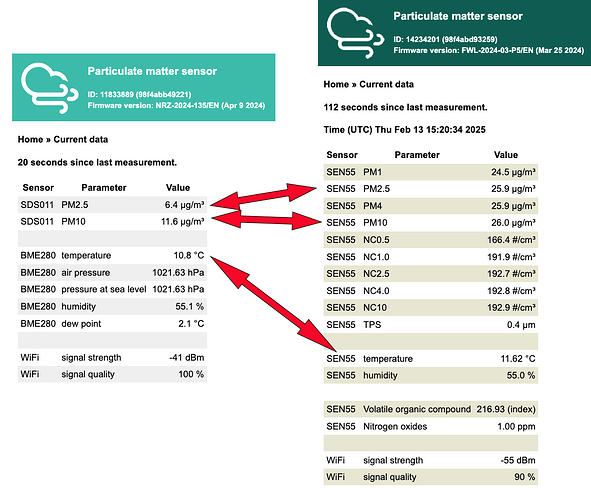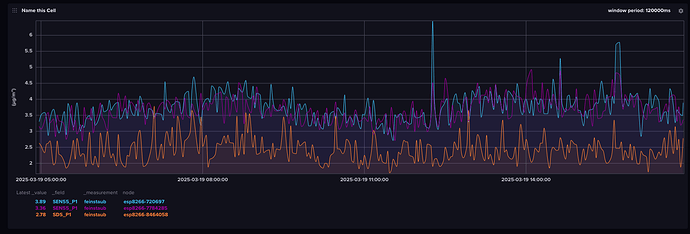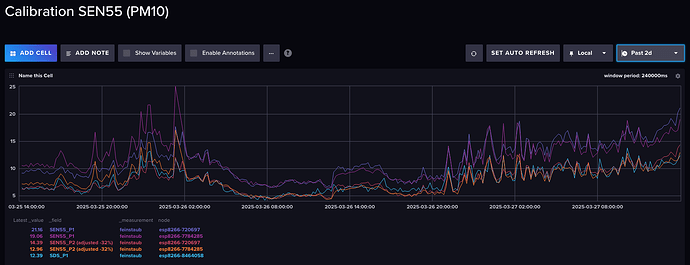data inconsistency between SEN55 and SDS011.
same balcony, same conditions…
different data…
Hello @metron6 , this is system immanent that there are differences between sensor from different manufacturers. And the time the sensors are running.
System: All optical sensor are counting particles in different classes of size. Then the manufacturer tries to find the right average weight per particle per class. But this may differ by location or time (types of industry, heating in winter, …)
Normally these values don’t differ that much as shown in your screenshot.
How long are these sensor running? We have seen some sensors that show high values the first days, until the “dust” inside the sensor was blown out.
Also is the powersupply within the specs of the manufacturer? Long cables can cause a voltage drop and misreadings.
You can check the supplied voltage at the sensor with a multimeter
i have them both outside… i will wait a week and i will repost the image…
they both use a nodemcu v3, supplied with a 3m cable and 5V.
Sen 55 gets the 5v he needs…
i have three devices, two of them with SEN55 and one with SDS011.
all three next to me ![]()
all three reporting to my influx server.
these are the comparison graphs of the last 12 hours.
the questions are:
are the SDS011 reporting low ?
are the SEN55 reporting high ?
how can we calibrate them ?
what about the other readings of SEN55 ?
this is a graph i made in influx, where i graph the values of SEN55 minus 42% (pm2.5)
and this is for pm10 -32%
SDS011 reports lower than any sertified sensor at low pm concentrations. There were some articles with comparisons about it. This underestimation could be to 2.5 times at concentrations of pm2.5 lower than 20 ug (mesuared by SDS011 himself) in dry air. Under conditions of wet air (more 75%Rel.Hum) the measurements (of low conc.) of SDS011 being influenced by humidity could be closer to “standart”. Please compare them when the air quality is poor (above 20 ug/m3 pm2.5) — it’s really interesting!




